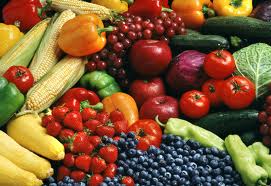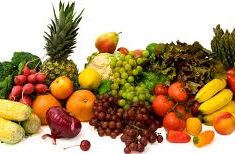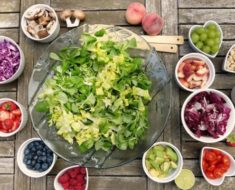Everyone knows you need to eat fruits and vegetables, but there are some that are even more critical when it comes to keeping your heart healthy. Fruits and vegetables have long been known to help prevent diseases like cancer, but scientists now know that the heart receives the biggest impact from a healthy diet of fruits and vegetables.
Any fruit or vegetable when added to your diet is going to be good for you. Still, some fruits and vegetables are even more powerful for your heart than others. When it comes to keeping your heart healthy, you want to choose as many of these vegetables as possible.
 The first category you need to add to your grocery list is dark, leafy greens. No more iceberg lettuce for you! Instead, you need to choose leafy veggies that have a darker green color. That dark color tells you there are more nutrients packed inside the food that translates to better heart health.
The first category you need to add to your grocery list is dark, leafy greens. No more iceberg lettuce for you! Instead, you need to choose leafy veggies that have a darker green color. That dark color tells you there are more nutrients packed inside the food that translates to better heart health.
Some of the best leafy greens to choose include romaine lettuce, green leaf lettuce, spinach, collard greens, and mustard greens. Cruciferous vegetables are also big winners in the heart health game.
You should choose plenty of fresh broccoli, cauliflower, kale, and cabbage for a heart-healthy diet. In addition, foods such as bok choy and Brussels sprouts can be great additions.
Now that you know which vegetables are best, it’s time to take a look at the fruits in the produce section. In this category, citrus comes out ahead of the pack. Eating fruits such as lemons, limes, oranges, and grapefruits can make a big impact on your heart health.
While eating the entire fruit is best because it provides you with a lot of fiber, you can also get a benefit from the nutrients in the juices of these fruits. Overall, it’s important to have a lot of variety when it comes to filling your diet with fruits and vegetables.
A colorful diet means you’re adding plenty of nutrients to your body. And if you’re like most Americans you need to seriously increase the number of servings you eat each day. Most people in the United States have between one and three servings of fruits and vegetables each day.
You need to make sure you’re having at least five servings of fruits and vegetables with your daily meals. And it’s even better if you eat between seven and nine servings each day. But don’t try to from one serving to nine in one fell swoop. Gradually increase your consumption.






